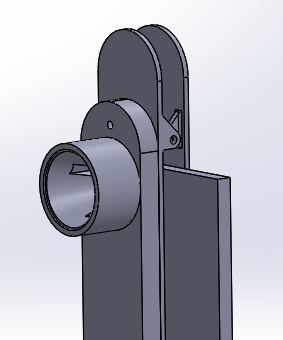And we’re back! After a relaxing Christmas break (and probably my last), we’ve kicked it back off in GMI. This year, my break was especially slow, so by the end of it, I was eager to get back.
One of our first items of business upon getting back was to receive our design project assignments. If you recall, all the GMI students found 100 unmet needs in healthcare settings last semester, and filtered the list down to their favorite 3. After each of us presented our favorite three, and from those we ranked which ones we would want to work on in the Spring for our design project. Coming back from the break, after Dr. Richardson had some time to think about the best way to resolve all of our preferences, we were assigned our team!
I was placed on a team with Sanjana, Siri, and Anna, and the need we are addressing is a way to diagnose and monitor retinopathy of prematurity (ROP), a disease that can cause blindness in infants born prematurely. ROP is generally easy to treat, but requires consistent supervision by a trained healthcare professional (typicaly an ophthalmologist) to identify the appropriate time for treatment. In low- and middle-income countries, there is not usually enough ophthalmologists available to screen all babies at risk, leading many who develop ROP to go blind due to lack of treatment. Moreover, as more and more babies are surviving birth due to advances being made in global health, this disease will affect a greater number of people.
Over the first 6-7 weeks of the semester, we will be doing research to validate this need, making sure that this is, in fact, a real problem and learning more about the disease itself. Assuming we do validate it, we will then move on to generating and testing solutions.
I’m excited to be on this project! As I’ve mentioned in previous posts, I really value getting to contribute to global health, and this will be a great way to do that.
This past week, we started into our “sprint” format of working on implementation projects, where one team focuses on one or two problems in one project for a whole week. The goal is to set pretty quick deadlines so that we don’t waste too much time worrying about too many details, and therefore get a lot done in a little amount of time. For the Brazil team, Josh was first to lead a sprint. We focused on generating new prototypes for his dermatoscope attachment and testing them. Because I had the most experience with Solidworks and building things, I was given the task of designing and building the concepts the team generated. Unfortunately, this task proved to be too much to handle in a week.
We successfully generated 2-3 new concepts as a team to prototype, and I got to work designing them. However, after spending most of my time that week designing these parts and it came time to print them, we found that something wasn’t working. After three attempts to print these designs, all failed due to filament tangling or bowing of the part away from the bottom surface. After the third printing, it was too late to try something else, so we diverted to damage control for our report out on Monday. I’d only had limited experience with 3D printers before this week, and after speaking with the lab techs, I did not think these designs would pose any problems. As of my writing this, I only have theories as to why it didn’t work, which will have to be tested in the upcoming weeks.
One thing I have taken away from this experience, though, was the value of playing with your parts. On two occasions this week, parts that we had planned on using did not behave as expected, causing time-costly pivots. These pivots could have been avoided if, when the parts arrived, they would have been tinkered with to see how they would be used. Instead, we assumed they would work like we expected and didn’t touch them until we needed them. Stated another way, don’t expect things to go according to plan. Nevertheless, one of the purposes of prototyping is to uncover these issues, so the week was still productive in that sense.
Lastly, another enjoyable aspect of my time spent at Rice thus far has been volunteering with Bridges International, an organization that welcomes international students to the U.S. through various mechanisms. One of the things I love about this organization is that it not only seeks to serve international students, but gives them the opportunity to serve the community. Just yesterday, a group of students with Bridges helped with some Hurricane Harvey recovery efforts still going on in a Cambodian community in Houston. We got to meet two families still deeply affected by the hurricane and do what we could to help them. Luckily, this involved swinging sledgehammers around for a few hours.




